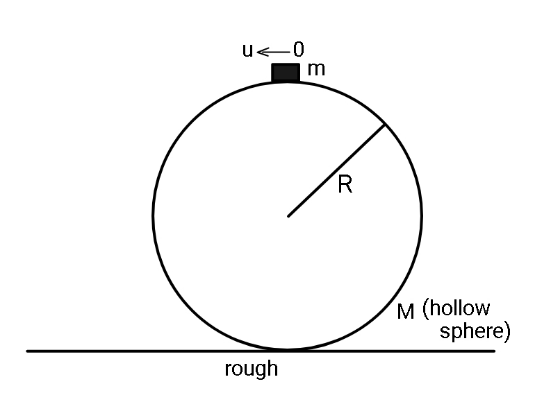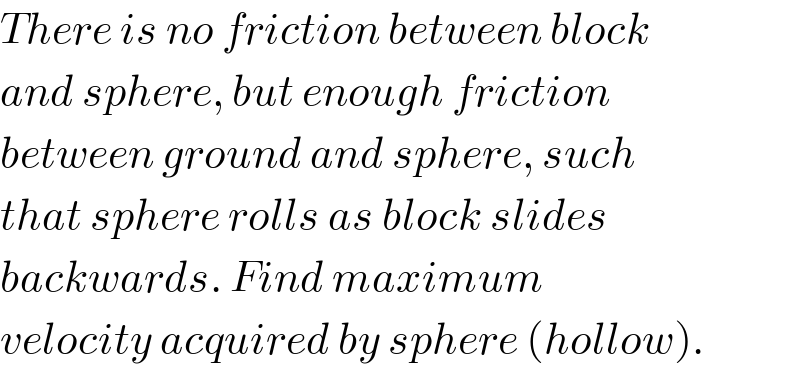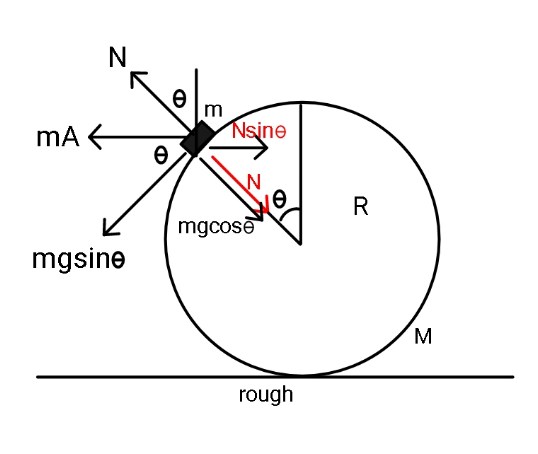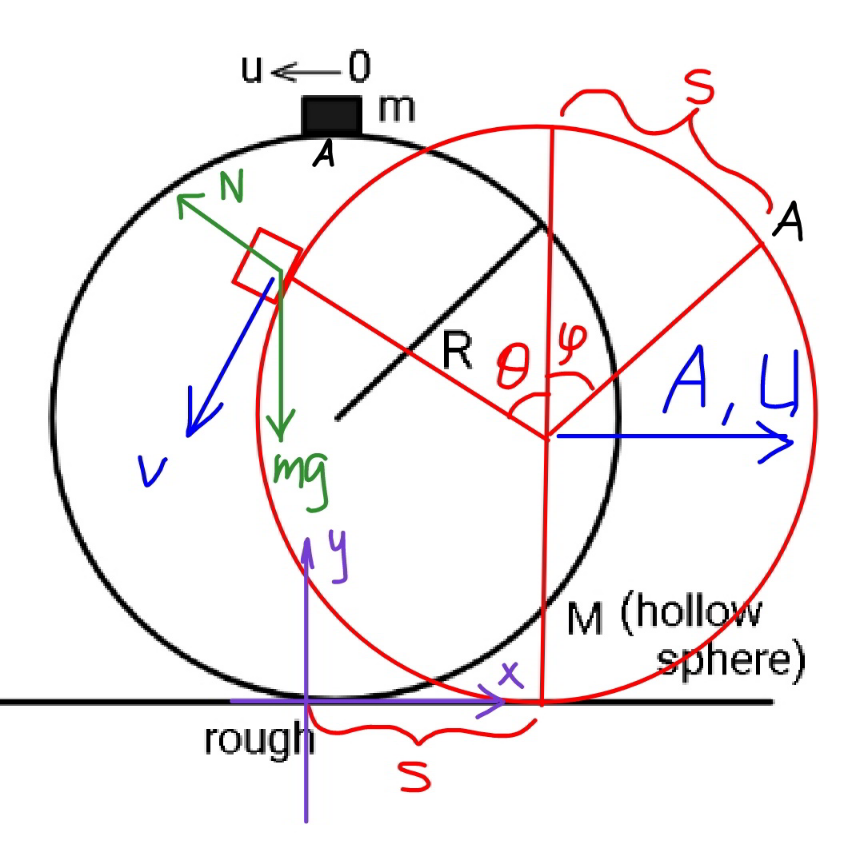
Question and Answers Forum
Question Number 108588 by ajfour last updated on 17/Aug/20

Commented by ajfour last updated on 21/Aug/20

Answered by ajfour last updated on 21/Aug/20

Commented by ajfour last updated on 21/Aug/20
![(Nsin θ)R(1+cos θ)=Iα ...(i) A=αR mgcos θ−N−mαRsin θ=((mv^2 )/R) ..(ii) mgsin θ+mαRcos θ=((mvdv)/(Rdθ)) ...(iii) (v/R)=(dθ/dt) ...(iv) ⇒ mgsin θ−((Iα)/(Rsin θ(1+cos θ))) −mαRsin θ=mR((dθ/dt))^2 from (iii) Rα=(1/(cos θ))(((vdv)/(Rdθ))−gsin θ) and let (I/(mR^2 ))=k , then gsin θ−((k/(sin θ(1+cos θ)))+sin θ)αR =R((dθ/dt))^2 ⇒ (d^2 θ/dt^2 )−((g/R))sin θ=(([((g/R))sin θ−((dθ/dt))^2 ]cos θ)/(sin θ+(k/(sin θ(1+cos θ))))) ......................................................](Q109134.png)
Answered by mr W last updated on 22/Aug/20

